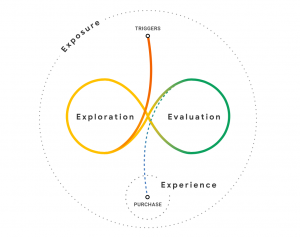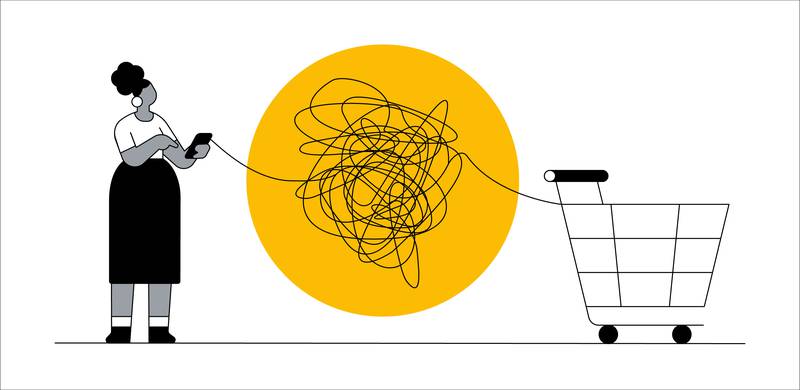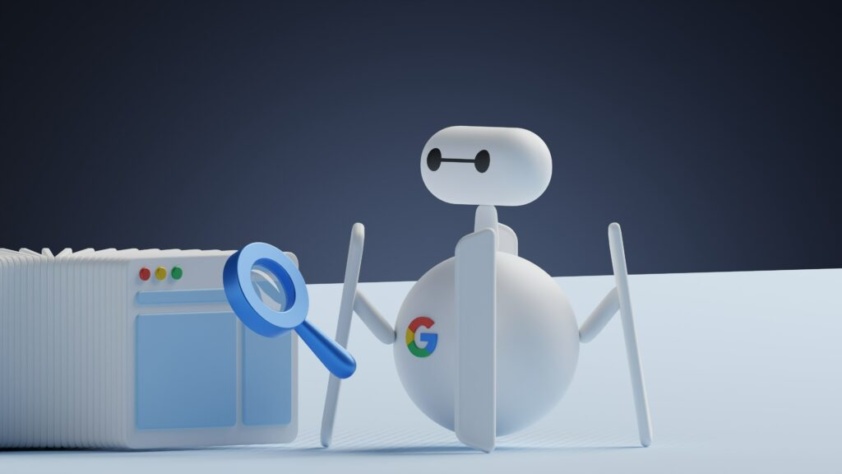Understanding how people shop online and how they evaluate and identify which brands to trust is the cornerstone of any successful online eCommerce marketing strategy. But beyond the usual technical and digital solutions we usually discuss, sits an untapped source of conversion power: Behavioural Science.
Google has recently released a new report on online shopping behaviour titled Decoding Decisions: Making Sense of the Messy Middle. Exploring how people shop online using their extensive resources and analytics, they have evaluated brands and identified what can be done to influence purchase decisions on a behavioural or psychological level.
As is probably expected, most online customer journeys are convoluted and messy. They chop and change and dart from one brand to another. They fill baskets that are forgotten and empty baskets only to refill them. It’s genuinely chaotic.
According to Google, online shoppers go through three phases. First, they explore their options, then they expand their knowledge of the product or service, while also exploring alternative brands to understand the market. Then third, they narrow down their choices and eventually come to a decision.
However, these processes are not linear. They’re happening simultaneously, over the internet, on social media, through other channels on- and off-line and stuck between all this mess sits you and your brand.
Google thankfully, has helped clarify this busy customer journey by identifying six key areas that trigger purchases and decisions, pulling the user out of the messy middle and into a converted, paying customer.

Source: Decoding Decisions, Google (2020)
Using Behavioural Science in eCommerce Marketing
- Tick All the Boxes – from how many GB a computer has to how many flavour choices of a drink there are, online shoppers look for an option that has everything they look for, then slowly cut down on categories that are less important until they find something that suits.
- Get Some Authority – Decision making parts of the brain work less when the advice comes from a trustworthy authority figure. Expert testimonials, therefore, offer huge advantages in convincing a user and converting a sale.
- Be Social – Humans are creatures of habit, and we love to copy those we trust or respect. Five-star ratings and extensive reviews prove a product is worthwhile, so if you don’t have a place to display customer reviews, then make one.
- Buy Now Think Later – No matter how much we kid ourselves, our brains live in the present. For every discarded basket online, there’s very few that are picked up at a later date. Discarded baskets are a result of poor decision-making support elements on your website. Prove your product is worthwhile, clearly list hidden costs, state delivery times, explain warranties, and show you’re ready to send as soon as they click buy – these all help making a decision on the spot easier, ultimately increasing a chance of a conversion.
- Be Scarce – For some products or services, being scarce is a desirable trait and can encourage quick decision making online (which increases rates of buy button pushing). However, if you’re too scarce or only offer something during a limited time, it can backfire and leave users feeling they are better without. Use with caution!
- Make Things Free – There’s always something attractive about a free item or a free upgrade. Offering a tasty discount or a clever promotional product for free can significantly sway even the savviest online shopper.
What this information tells us is that even for new brands just starting out, with the right approaches to behaviour science weaved throughout your website and marketing strategies, you can disrupt purchase preferences and steal customers from your competitors with reasonable ease.
While established brands have a significant force on the market at large, by tailoring your offering to specific shoppers and their needs on a behavioural level (as opposed to a practical use level), can create significant returns for an online eCommerce business. However, brands still matter and breaking down shopper loyalty can be a tough coconut to crack.
So how do you steal customers from your online competitors?
Well, according to Google, it takes just four steps:
- Ensure brand presence, so your product or service is strategically in front of mind while your customers explore.
- Employ behavioural science principles intelligently and responsibly to make your proposition compelling as consumers evaluate their options.
- Close the gap between trigger and purchase, so your existing and potential customers spend less time exposed to competitor brands.
- Build flexible, empowered teams who can work cross-functionally to avoid traditional branding and performance silos that are likely to leave gaps in the messy middle.
You can find the full report by Google by clicking here, and you can reach out to Myk Baxter Marketing. They already employ many of these tricks and practices in their everyday professional digital marketing consultancy and website design services and keep up to date with Google and their latest reports, so you’re always one step ahead of the competition.
The post Thanks Google: Tips on How to Steal Customers from Your Online Competitors appeared first on eCommerce Expert.





